|
Books Should Be Free Loyal Books Free Public Domain Audiobooks & eBook Downloads |
|
|
Books Should Be Free Loyal Books Free Public Domain Audiobooks & eBook Downloads |
|
Science |
|---|
|
Book type:
Sort by:
View by:
|
By: Walter J. Sheldon (1917-) | |
|---|---|
 Houlihan's Equation
Houlihan's Equation
| |
 Two Plus Two Makes Crazy
Two Plus Two Makes Crazy
| |
 This is Klon Calling
This is Klon Calling
| |
By: Walter L. (Walter Lytle) Pyle (1871-1921) | |
|---|---|
 Anomalies and Curiosities of Medicine
Anomalies and Curiosities of Medicine
| |
By: Walter Libby (1867-1955?) | |
|---|---|
 Introduction to the History of Science
Introduction to the History of Science
A highly accessible introductory history of the development of scientific thought, method, and application from the first practical concepts of time and space to the development of the first successful heavier-than-air flying machine and the discovery of radioactivity . - Summary by Steven Seitel | |
By: Walter M. Miller (1923-1996) | |
|---|---|
 Death of a Spaceman
Death of a Spaceman
| |
 The Hoofer
The Hoofer
| |
By: Walter P. (Walter Penn) Taylor (1888-1972) | |
|---|---|
 Life History of the Kangaroo Rat
Life History of the Kangaroo Rat
| |
By: Walter S. Tevis (1928-1984) | |
|---|---|
 The Big Bounce
The Big Bounce
| |
By: Walter Stitt Robinson | |
|---|---|
 Mother Earth Land Grants in Virginia 1607-1699
Mother Earth Land Grants in Virginia 1607-1699
| |
By: Walter W. Bryant (1865-1923) | |
|---|---|
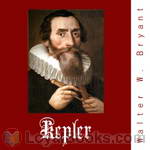 Kepler
Kepler
This biography of Johannes Kepler begins with an account of what the world of astronomy was like before his time, then proceeds to a look at his early years. Two chapters deal with his working relationship with Tycho Brahe. These are followed by a look at Kepler's laws and his last years. | |
 History of Astronomy
History of Astronomy
In this book, Walter W. Bryant traces the history of astronomy through the ages. We start at the very beginning, where astronomy was an occupation of priests, move with the help of the Arabs through the middle ages to the discovery of the heliocentric system by Copernicus, Brahe, Kepler, and Galileo. A discussion of Newton and his laws follows as well as a description of the biographies and works of successors like Halley, Herschel, and Bessel. The second half of the book deals with recent discoveries with respect to our solar system and the comets, meteors, and stars beyond. | |
By: Walter Woelber Dalquest (1917-2000) | |
|---|---|
 A New Doglike Carnivore, Genus Cynarctus, From the Clarendonian, Pliocene, of Texas
A New Doglike Carnivore, Genus Cynarctus, From the Clarendonian, Pliocene, of Texas
| |
By: Ward McAllister (1827-1895) | |
|---|---|
 Society as I Have Found It
Society as I Have Found It
Mark Twain illustrator Dan Beard recalled discussing McAllister’s book with Twain. “It was before Webster & Company failed that Ward McAllister’s book appeared, and when he sauntered into my studio one day, I said: ‘Mr. Clemens, have you read Ward McAllister’s book?’ ‘Yes; have you?’ he replied. ‘Indeed, I have. I have read it through several times, and intend to read it again. It is one of the most humorous books I ever read.’ ‘That’s so,’ said Mark, ‘that’s so... | |
By: Ward Moore (1903-1978) | |
|---|---|
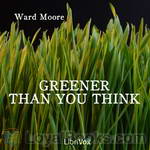 Greener Than You Think
Greener Than You Think
Do remember reading a panic-mongering news story a while back about genetically engineered “Frankengrass” “escaping” from the golf course where it had been planted? That news story was foreshadowed decades previously in the form of prophetic fiction wherein a pushy salesman, a cash-strapped scientist, and a clump of crabgrass accidentally merge forces with apocalyptic consequences. A triple-genre combo of science fiction, horror, and satire, Greener Than You Think is a forgotten classic that resonates beautifully with modern times. This is a faithful reading of a 1947 first edition text. | |
By: Warner Van Lorne | |
|---|---|
 Wanted – 7 Fearless Engineers!
Wanted – 7 Fearless Engineers!
A great civilization’s fate lay in Dick Barrow’s hands as he led his courageous fellow engineers into a strange and unknown land. None of them knew what lay ahead–what dangers awaited them–or what rewards. But they did not hesitate because the first question asked them had been: “Are you a brave man?” | |
By: Warren H. (Warren Hugh) Wilson (1867-1937) | |
|---|---|
 The Evolution of the Country Community A Study in Religious Sociology
The Evolution of the Country Community A Study in Religious Sociology
| |
By: Washington Irving (1783-1859) | |
|---|---|
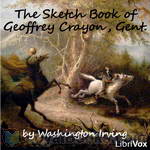 The Sketch Book of Geoffrey Crayon, Gent.
The Sketch Book of Geoffrey Crayon, Gent.
Apart from "Rip Van Winkle" and "The Legend of Sleepy Hollow" - the pieces which made both Irving and The Sketch Book famous - other tales include "Roscoe", "The Broken Heart", "The Art of Book-making", "A Royal Poet", "The Spectre Bridegroom", "Westminster Abbey", "Little Britain", and "John Bull". His stories were highly influenced by German folktales, with "The Legend of Sleepy Hollow" being inspired by a folktale recorded by Karl Musaus. Stories range from the maudlin (such as "The Wife" and... | |
By: Wesley Barefoot | |
|---|---|
 The Cuckoo Clock
The Cuckoo Clock
| |
By: Westinghouse Electric and Manufacturing Company | |
|---|---|
 Silent Sentinels: Protective Relays for A-C and D-C Systems
Silent Sentinels: Protective Relays for A-C and D-C Systems
Possibly the first book concerning the protective relays and schemes used in the generation, transmission, and distribution of electric power. While the technology has changed over the last century, incredibly much of the fundamental theory remains the same. - Summary by Rick Jay | |
By: Will Mohler | |
|---|---|
 In the Control Tower
In the Control Tower
| |
By: Will N. (Will Nathaniel) Harben (1858-1919) | |
|---|---|
 The Land of the Changing Sun
The Land of the Changing Sun
| |
By: William A Alcott (1798-1859) | |
|---|---|
 Young Woman's Guide to Excellence
Young Woman's Guide to Excellence
Much of this guide for young women is still valuable today. Despite mentions of tight lacing and other out of date matters, it contains many timeless principles. (Bria Snow) | |
By: William A. Alcott (1798-1859) | |
|---|---|
 The Young Mother Management of Children in Regard to Health
The Young Mother Management of Children in Regard to Health
| |
By: William A. Sinclair (1858-1912) | |
|---|---|
 Aftermath of Slavery
Aftermath of Slavery
This work describes conditions and forces the black population of the South faced after freedom was brought by the Civil War. As Sinclair puts it at the outset of his book, ". . . the chief efforts of Southern leadership have been to curtail the freedom of the colored people, to minimize their liberty and reduce them as nearly as possible to the condition of chattel slaves." - Summary by Jim Locke | |
By: William Alexander Hammond (1828-1900) | |
|---|---|
 Fasting Girls Their Physiology and Pathology
Fasting Girls Their Physiology and Pathology
| |
By: William Alvin Clemens | |
|---|---|
 Records of the Fossil Mammal Sinclairella, Family Apatemyidae, From the Chadronian and Orellan
Records of the Fossil Mammal Sinclairella, Family Apatemyidae, From the Chadronian and Orellan
| |
By: William Andrews (1848-1908) | |
|---|---|
 Bygone Punishments
Bygone Punishments
| |
By: William B. Jackson | |
|---|---|
 Seventeen Species of Bats Recorded from Barro Colorado Island, Panama Canal Zone
Seventeen Species of Bats Recorded from Barro Colorado Island, Panama Canal Zone
| |
By: William Beebe (1877-1962) | |
|---|---|
 Edge of the Jungle
Edge of the Jungle
| |
 The Log of the Sun A Chronicle of Nature's Year
The Log of the Sun A Chronicle of Nature's Year
| |
By: William Booth (1829-1912) | |
|---|---|
 In Darkest England and the Way Out
In Darkest England and the Way Out
| |
 In Darkest England and the Way Out
In Darkest England and the Way Out
William Booth was the founding General of the Salvation Army in late nineteenth century England. Finding his salvation as a teenager, he went on to become one of the most controversial and, ultimately, well-loved and respected social reformers of his day. Published in 1890 amidst the turmoil of the death of his beloved wife, Catherine, “In Darkest England” was hailed as a revolutionary approach to coping with the social ills facing Great Britain at the time. Although 130 years old, this revolutionary book of Victorian England still has much to say of note today. - Summary by Tom Hirsch | |
By: William Carpenter (1830-1896) | |
|---|---|
 One Hundred Proofs That the Earth Is Not a Globe
One Hundred Proofs That the Earth Is Not a Globe
A bit of pseudo-science that will baffle, confuse, and amaze! Until the Space Age, there was little every-day, self-evident proof that the earth was a globe, and plenty of people believed in a flat Earth. Here are 100 short arguments for a flat Earth. Some of them can be proven wrong fairly easily; others confound; and others are stated so confusingly that they MUST be true! - Summary by TriciaG “‘One Hundred Proofs that the Earth is Not a Globe,’ by William Carpenter, is published by the... | |
By: William Carroll | |
|---|---|
 Solomon's Orbit
Solomon's Orbit
| |
By: William Clark Russell (1844-1911) | |
|---|---|
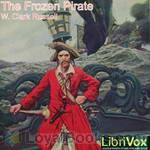 The Frozen Pirate
The Frozen Pirate
Sailing adventure with storms, icebergs, shipwrecks, treasure, and the reawakening of a pirate frozen in suspended animation for nearly fifty years | |
By: William Colby Rucker (1875-) | |
|---|---|
 Measles
Measles
| |
By: William Davenport Hulbert (1868-1913) | |
|---|---|
 Forest Neighbors Life Stories of Wild Animals
Forest Neighbors Life Stories of Wild Animals
| |
By: William Dean Howells (1837-1920) | |
|---|---|
 Boy Life Stories and Readings Selected From The Works of William Dean Howells
Boy Life Stories and Readings Selected From The Works of William Dean Howells
| |
By: William Denton (1823-1883) | |
|---|---|
 The Deluge in the Light of Modern Science A Discourse
The Deluge in the Light of Modern Science A Discourse
| |
By: William Douglas Morrison (1853-1943) | |
|---|---|
 Crime and Its Causes
Crime and Its Causes
| |
By: William Drake Westervelt (1849-1939) | |
|---|---|
 Legends of Old Honolulu
Legends of Old Honolulu
Hawai'i: land of wonder and beauty and a culture rich in history and mythology. Dr. Westervelt settled in Hawai'i as a young man and collected stories and myths from his adopted home. Here we have a collection dedicated to the largest city, Honolulu. - Summary by Lynne Thompson | |
By: William E. B. Du Bois (1868-1963) | |
|---|---|
 The Negro
The Negro
| |
By: William E. Barton (1861-1930) | |
|---|---|
 Life of Clara Barton - Volume 1
Life of Clara Barton - Volume 1
Clarissa Harlowe Barton was a pioneering American nurse who founded the American Red Cross. She was a hospital nurse in the American Civil War, a teacher, and a patent clerk. Since nursing education was not then very formalized and she did not attend nursing school, she provided self-taught nursing care. Barton is noteworthy for doing humanitarian work and civil rights advocacy at a time before women had the right to vote. She was inducted into the National Women's Hall of Fame in 1973. Volume 1 ends during the years just after the end of the Civil War. | |
 Life of Clara Barton - Volume 2
Life of Clara Barton - Volume 2
Clarissa Harlowe Barton was a pioneering American nurse who founded the American Red Cross. She was a hospital nurse in the American Civil War, a teacher, and a patent clerk. Since nursing education was not then very formalized and she did not attend nursing school, she provided self-taught nursing care. Barton is noteworthy for doing humanitarian work and civil rights advocacy at a time before women had the right to vote. She was inducted into the National Women's Hall of Fame in 1973.Volume 2... | |
By: William E. Gladstone (1809-1898) | |
|---|---|
 On Books and the Housing of Them
On Books and the Housing of Them
| |
By: William Edward Hartpole Lecky (1838-1903) | |
|---|---|
 Historical and Political Essays
Historical and Political Essays
| |
By: William Edwards Henderson (1870-) | |
|---|---|
 An Elementary Study of Chemistry
An Elementary Study of Chemistry
| |
By: William F. Nolan (1928-) | |
|---|---|
 Of Time and Texas
Of Time and Texas
| |
 Small World
Small World
| |
By: William Fergusson (1773-1846) | |
|---|---|
 Letters on the Cholera Morbus
Letters on the Cholera Morbus
| |
By: William Gaertner and Company | |
|---|---|
 Astronomical Instruments and Accessories
Astronomical Instruments and Accessories
| |
By: William George Hooper | |
|---|---|
 Aether and Gravitation
Aether and Gravitation
| |
By: William Guthrie (1835-1908) | |
|---|---|
 Second Shetland Truck System Report
Second Shetland Truck System Report
| |
By: William H. (WIlliam Harvey) Allen (1874-1963) | |
|---|---|
 Civics and Health
Civics and Health
| |
By: William H. Councill (1848-1909) | |
|---|---|
 Negro Laborer: A Word to Him
Negro Laborer: A Word to Him
William H. Councill, former slave and contemporary of Booker T. Washington was founder of Huntsville Normal School, now Alabama Agricultural and Mechanical University in Normal, Alabama. This short volume consists of short pieces of advice to the Negro workers of his time with some statistical information at the end. Councill reflects many of the attitudes and opinions of his time. | |
By: William Hanna Thomson (1833-1918) | |
|---|---|
 Brain and Personality, or the Physical Relations of the Brain to the Mind
Brain and Personality, or the Physical Relations of the Brain to the Mind
One of the earlier works on brain science, relating what was then known or conjectured about the connection between the physical brain and the individual personality, including the ability of speech and language. As this is an early work , some of the information related is, of course, outdated; but much of it is still relevant today. | |
By: William Harmon Norton (1856-1944) | |
|---|---|
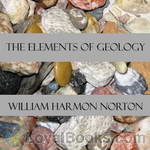 The Elements of Geology
The Elements of Geology
Geology is a science of such rapid growth that no apology is expected when from time to time a new text-book is added to those already in the field. The present work, however, is the outcome of the need of a text-book of very simple outline, in which causes and their consequences should be knit together as closely as possible,—a need long felt by the author in his teaching, and perhaps by other teachers also. The author has ventured, therefore, to depart from the common usage which subdivides... | |
By: William Henry Giles Kingston (1814-1880) | |
|---|---|
 The Western World Picturesque Sketches of Nature and Natural History in North and South America
The Western World Picturesque Sketches of Nature and Natural History in North and South America
| |
By: William Henry Samuel Jones (1876-1963) | |
|---|---|
 Malaria in Greek History
Malaria in Greek History
This book is an attempt to correct and develop the theory proposed tentatively in the little work Malaria. Put briefly, this theory is as follows. In the struggle for existence man has competed, not only with his fellow-men, but also with wild animals and disease- parasites. The fight against beasts was decided long before the historic period, but parasites have always been, and still are, formidable opponents. Whole tribes have been wiped out by plague, kala-azar and measles; and even when the disease-parasite does not win such a decisive victory, it often weakens a nation so much that the latter falls an easy victim to its healthier neighbours... | |
 Malaria: A Neglected Factor in the History of Greece and Rome
Malaria: A Neglected Factor in the History of Greece and Rome
This short book has the objective of showing how important it is to stamp out malaria as soon as possible. Unlike a plague that suddenly takes it victims and leaves its survivors, malaria is a debilitating infection. It seizes all, fit and unfit alike, gradually lessening the general vitality until, in some cases, it has exterminated the people among whom it has become endemic. Extensive evidence has been compiled and summarised from consultation with medical authorities, antique literature, and historical sources to show how this insidious disease has undermined the integrity of a pair of ancient empires, and ultimately became a factor in their downfall. - Summary by Leon Harvey | |
By: William Hope Hodgson (1877-1918) | |
|---|---|
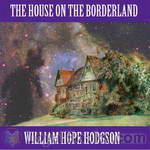 The House on the Borderland
The House on the Borderland
In 1877, two gentlemen, Messrs Tonnison and Berreggnog, head into Ireland to spend a week fishing in the village of Kraighten. While there, they discover in the ruins of a very curious house a diary of the man who had once owned it. Its torn pages seem to hint at an evil beyond anything that existed on this side of the curtains of impossibility. This is a classic novel that worked to slowly bridge the gap between the British fantastic and supernatural authors of the later 19th century and modern horror fiction. Classic American horror writer H. P. Lovecraft lists this and other works by Hodgson among his greatest influences. | |
By: William Hunter (1718-1783) | |
|---|---|
 On the uncertainty of the signs of murder in the case of bastard children
On the uncertainty of the signs of murder in the case of bastard children
| |
By: William J. (William Josephus) Robinson (1867-1936) | |
|---|---|
 Woman Her Sex and Love Life
Woman Her Sex and Love Life
| |
By: William J. Beal (1833-1924) | |
|---|---|
 Seed Dispersal
Seed Dispersal
| |
By: William Joseph Long (1867-1952) | |
|---|---|
 Ways of Wood Folk
Ways of Wood Folk
Late nineteenth-century naturalist William J. Long invites us in to the secret worlds of the woodland animals. Containing Long's own animal observations along with stories related to him by other humans who inhabit the woods, these stories give us an insight into the behavior of wild animals as they go about their lives in their own secret places deep in the forests of eastern North America. Although Long was accused in his day of anthropomorphizing the animals he wrote about, readers who are familiar with any of the animals he writes of will have glimpses of recognition at behaviors they have seen for themselves and explore the deeper meanings these actions have in that animal's life... | |
 Secrets of the Woods
Secrets of the Woods
The unique merit of this nature student rests in his fascinating style of writing, which invariably interests young and old; for without this element his pioneer work in the realm of nature would now be familiar only to scientists, introducing people everywhere into the wonderland of nature hitherto entirely closed to all. This is another chapter in the shy, wild life of the fields and woods. Little Toohkees, the wood mouse that dies of fright in the author’s hand; the mother otter, Keeonekh,... | |
By: William Larrabee (1832-1912) | |
|---|---|
 The Railroad Question A historical and practical treatise on railroads, and remedies for their abuses
The Railroad Question A historical and practical treatise on railroads, and remedies for their abuses
| |
By: William Le Queux (1864-1927) | |
|---|---|
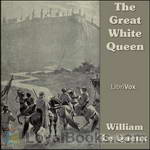 The Great White Queen
The Great White Queen
How to describe this book? In a word – savage. For those regular Le Queux mystery listeners, this book is a step in a different direction by the author. The book starts out like most Le Queux. Our hero, Richard Scarsmere, befriends an individual (Omar) at an English boarding school who turns out to be an African prince from a kingdom called Mo. Omar receives a visit from one of his mother’s trusted advisers. His mother, the Great White Queen, seeks him to return home immediately. Omar convinces Scarsmere to return to Africa with him since there is little opportunity awaiting him in London. What follows is a tale of deceit, treachery, barbarity, and mystery. | |
 The Mystery of the Green Ray
The Mystery of the Green Ray
| |
By: William M. Lee | |
|---|---|
 Junior Achievement
Junior Achievement
| |
By: William Morgan (1774-1826?) | |
|---|---|
 The Mysteries of Free Masonry Containing All the Degrees of the Order Conferred in a Master's Lodge
The Mysteries of Free Masonry Containing All the Degrees of the Order Conferred in a Master's Lodge
| |
By: William P. Salton | |
|---|---|
 Operation Lorelie
Operation Lorelie
| |
By: William Paley (1743-1805) | |
|---|---|
 Natural Theology
Natural Theology
In this early nineteenth-century classic, William Paley assesses how our understanding of nature reflects characteristics of its creator. First published in 1802, the book went through more than twenty editions, remains in print, and is still a reference point in the ongoing conversation about evolution or creation as the better explanation for the appearance of order and design in our universe. - Summary by Barry Ganong | |
By: William Radcliff Birt (1804-1881) | |
|---|---|
 The Hurricane Guide Being An Attempt To Connect The Rotary Gale Or Revolving Storm With Atmospheric Waves.
The Hurricane Guide Being An Attempt To Connect The Rotary Gale Or Revolving Storm With Atmospheric Waves.
| |
By: William Rounseville Alger (1822-1905) | |
|---|---|
 The Friendships of Women
The Friendships of Women
| |
By: William Ruschenberger (1807-1895) | |
|---|---|
 The Elements of Botany
The Elements of Botany
The Elements of Botany is one of seven in a Series of First Books of Natural History Prepared for the Use of Schools and Colleges. It is a succinct little textbook that presents a solid introduction to plant science. | |
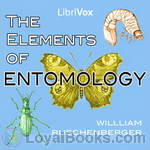 The Elements of Entomology
The Elements of Entomology
The Elements of Entomology is one of seven in a Series of First Books of Natural History Prepared for the Use of Schools and Colleges. It is a succinct little textbook from 1845 presents an introduction to entomology. The author was a surgeon in the U.S. Navy and president of the Academy of Natural Sciences. | |
 Elements of Mammalogy
Elements of Mammalogy
The Elements of Mammalogy is one of seven in a Series of First Books of Natural History Prepared for the Use of Schools and Colleges. This succinct little textbook from 1845 presents an introduction to mammalogy. The information, albeit not current, is still interesting and of use as a general overview of mammal biology. The classification of mammals has changed considerably since this time. The author was a surgeon in the U.S. Navy and president of the Academy of Natural Sciences. | |
 Elements of Ornithology
Elements of Ornithology
The Elements of Ornithology is one of seven in a Series of First Books of Natural History Prepared for the Use of Schools and Colleges. This succinct little textbook from 1845 presents an introduction to ornithology. The information, albeit not current, is still interesting and of use as a general overview of bird biology and classification. The author was a surgeon in the U.S. Navy and president of the Academy of Natural Sciences. | |
 Elements of Geology
Elements of Geology
Elements of Geology is one in a Series of First Books of Natural History Prepared for the Use of Schools and Colleges. This succinct little textbook from 1846 presents an introduction to geology. The information, albeit not current, is still interesting and of use as a general overview of the subject as well as interesting look into the period. Please note that some of the information has changed considerably since this time. The author was a surgeon in the U.S. Navy and president of the Academy of Natural Sciences. - Summary by Amy Gramour | |
 Elements of Anatomy and Physiology
Elements of Anatomy and Physiology
The Elements of Anatomy and Physiology is one in a Series of First Books of Natural History Prepared for the Use of Schools and Colleges. This succinct little textbook from 1852 presents an introduction to the workings of the human body. The information, albeit not current, is still interesting and of use as a general overview of the subject as well as interesting look into the period. Please note that some of the information may have changed considerably since this time. The author was a surgeon in the U.S. Navy and president of the Academy of Natural Sciences. - Summary by A. Gramour | |
By: William Saunders (1822-1900) | |
|---|---|
 Catalogue of Economic Plants in the Collection of the U. S. Department of Agriculture
Catalogue of Economic Plants in the Collection of the U. S. Department of Agriculture
| |
By: William T. Hornaday (1854-1937) | |
|---|---|
 Extermination of the American Bison
Extermination of the American Bison
The American bison (Bison bison), also commonly known as the American buffalo, is a North American species of bison that once roamed the grasslands of North America in massive herds, became nearly extinct by a combination of commercial hunting and slaughter in the 19th century and introduction of bovine diseases from domestic cattle. William T. Hornaday’s advocacy is credited with preserving the American bison from extinction. This book, originally published in 1887, gives Mr. Hornaday's evidence of the Bison's impending extinction. (Adapted from Wikipedia by Ann Boulais) | |
By: William Taylor Marrs | |
|---|---|
 Confessions of a Neurasthenic
Confessions of a Neurasthenic
| |
By: William Temple Hornaday (1854-1937) | |
|---|---|
 The Minds and Manners of Wild Animals A Book of Personal Observations
The Minds and Manners of Wild Animals A Book of Personal Observations
| |
By: William Thomas Fernie (1830-) | |
|---|---|
 Herbal Simples Approved for Modern Uses of Cure
Herbal Simples Approved for Modern Uses of Cure
| |
By: William Trufant Foster (1879-1950) | |
|---|---|
 The Social Emergency Studies in Sex Hygiene and Morals
The Social Emergency Studies in Sex Hygiene and Morals
| |
By: William Tyler Olcott (1873-1936) | |
|---|---|
 A Field Book of the Stars
A Field Book of the Stars
| |
By: William W. Stuart | |
|---|---|
 Inside John Barth
Inside John Barth
| |